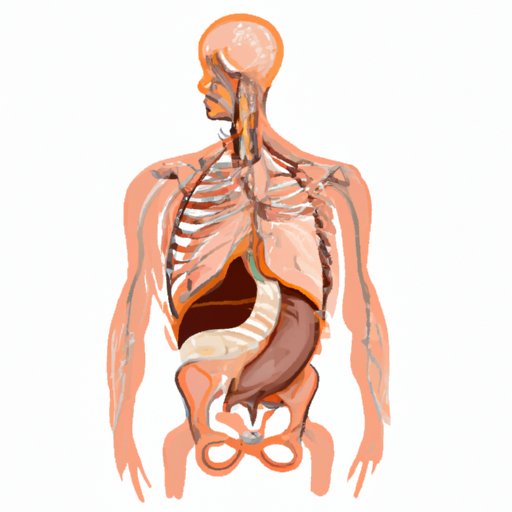I. Introduction
Cadavers have played a significant role in medical education and research for centuries. They serve as invaluable tools for medical students and researchers to learn about the human body and advance medical knowledge. In this article, we will explore what a cadaver is, their purpose in medical education and research, the ethical considerations surrounding their use, and how they continue to serve beyond death. Our goal is to provide readers with a comprehensive understanding of the importance of cadavers and the crucial role they play in advancing medical knowledge.
II. The Science Behind a Lifeless Body: Understanding Cadavers and Their Importance in Medical Education
A cadaver is a deceased human body that is used for medical purposes, such as education and research. Cadavers are typically obtained through body donation programs, where individuals can donate their bodies to science. In medical education, cadavers are used to teach anatomy and provide hands-on experience for medical students. Cadavers allow students to see and touch the various structures of the human body, which is crucial for their understanding of human anatomy. Additionally, cadavers provide a unique learning experience that cannot be replicated through textbooks or computer models.
The benefits of using cadavers in medical education are numerous. For one, cadavers allow for a higher level of understanding of human anatomy. The hands-on experience that cadavers provide allows for a deeper understanding of the complexities of the human body. Furthermore, cadavers provide a diverse range of anatomical variations, allowing students to learn about the variations that occur in the human body. Lastly, cadavers allow students to practice techniques, such as surgical procedures, in a safe and controlled environment.
Despite the benefits, there are also limitations and challenges associated with the use of cadavers. Cadavers are limited in their ability to simulate live anatomical structures, as they lack the properties of living tissue. Additionally, there is a limited supply of cadavers, which can make it difficult for medical schools to obtain an adequate number for their educational programs.
III. From Death to Discovery: Unpacking the Role of Cadavers in Advancing Medical Knowledge
Cadavers have contributed to medical knowledge and advancement throughout history. Some of the most important medical discoveries or procedures have been made possible through the use of cadavers. For example, the discovery of the circulation of blood by William Harvey was made possible through the use of cadavers. Additionally, surgical procedures, such as heart transplants and joint replacements, were perfected using cadavers.
Cadavers remain relevant in modern medical research and innovation. For example, cadavers are used to develop and test medical devices, such as prosthetics, implants, and surgical instruments. Cadavers are also used in research related to diseases and conditions such as cancer, dementia, and stroke.
IV. The Ethics of Working with Cadavers: A Look into the Controversial Practice of Body Donation
Body donation is the act of donating one’s body to science after death. The practice is controversial, and there are ethical concerns surrounding the use of cadavers in medical education and research. The use of cadavers raises issues about the dignity and respect accorded to the human body, informed consent, and the proper handling of cadavers.
Proper handling of cadavers includes obtaining informed consent from donors and respecting the wishes of donors and their families. Medical institutions must ensure that cadavers are treated with respect and that the bodies are not used for any other purposes without the consent of the donor or their family. Furthermore, medical institutions must ensure that cadavers are not bought or sold for profit.
V. Beyond the Grave: How Cadavers Continue to Serve Long after Death
Cadavers can be used in other fields beyond medical education and research. Forensic science is one field that relies heavily on the use of cadavers. Cadavers are used in forensic investigations to determine the cause of death and to identify victims of crimes. Cadavers are also used in crash testing to study the effects of accidents on the human body.
Future uses of cadavers in medical innovation and technology are promising. For example, 3D printing technology is being used to create anatomically accurate models based on CT scans of cadavers. These models can be used for surgery planning and medical education.
VI. A Matter of Respect: Honoring the Individuals Who Gift Their Bodies to Science through Cadaver Donation
It is important to acknowledge and honor the donors who have given their bodies to science. Medical institutions and researchers can show respect to these donors by treating cadavers with care and reverence, thanking donors and their families, and recognizing donors in scientific publications. Encouraging readers to consider donating their own bodies to science after death is one way to show respect and gratitude to donors.
VII. Conclusion
In conclusion, the use of cadavers in medical education and research is an essential part of advancing medical knowledge. Cadavers provide a unique learning experience and have contributed to some of the most important medical discoveries in history. Despite the ethical concerns and challenges associated with their use, cadavers remain an invaluable tool in medical education and research. Aspiring medical students and researchers can benefit greatly from learning about the science and significance of cadavers, and by considering the option of body donation, readers can contribute to the future of medical knowledge.
